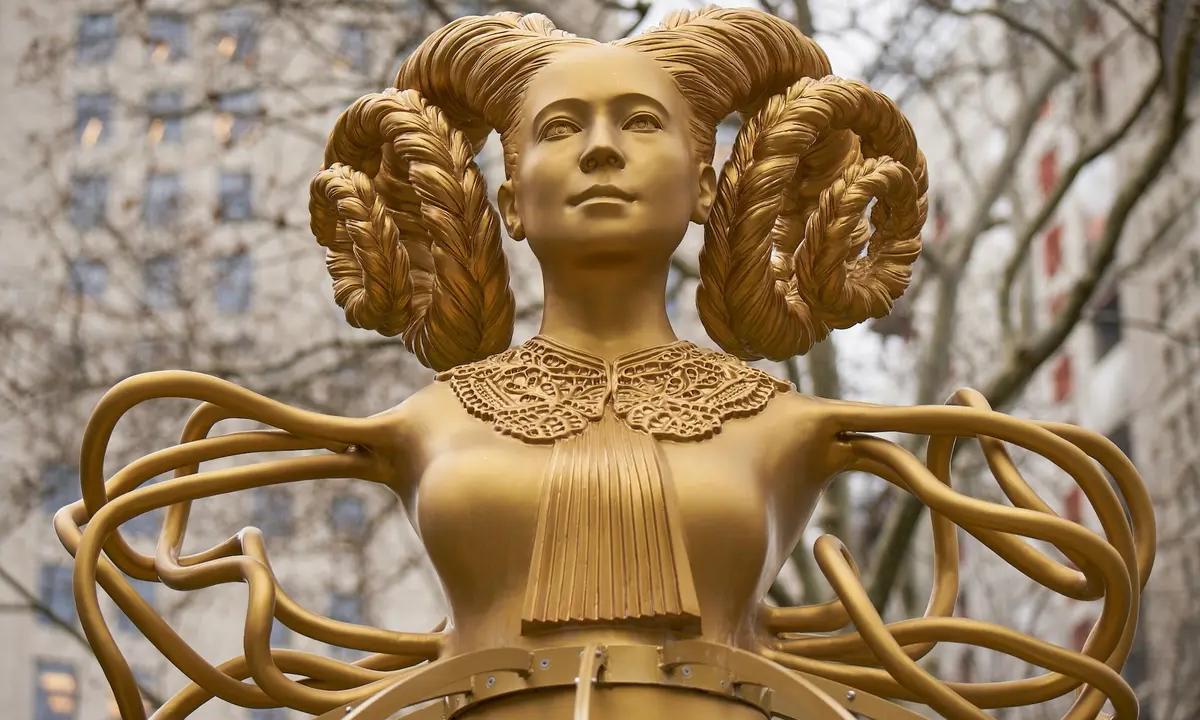Shahzia Sikander's Witness (2023) in Madison Square Park for Havah…to breathe, air, life (2023)
Photo: Yasunori Matsui, courtesy the artist and Madison Square Park Conservancy
An outdoor sculpture by the artist Shahzia Sikander at the University of Houston (UH) has been vandalised in the wake of anti-abortion protests on campus. The 18-ft-tall bronze depiction of a mythological female figure was beheaded early in the morning on 8 July during the throes of Hurricane Beryl power outages across Texas. According to The New York Times, campus officials informed the artist that they had obtained footage of the incident; they have not yet confirmed if the destruction was related to the activists.
“The damage is believed to be intentional,” Kevin Quinn, executive director of media relations at UH, told the Times. “The University of Houston Police Department is currently investigating the matter.”
Sikander is a Pakistani American artist whose work explores the postcolonial implications of identity. She is a recipient of the prestigious MacArthur “Genius” Award, and a survey of her work is being shown in tandem with this year’s Venice Biennale. The vandalised statue, Witness (2023), one of the artist’s first public installations in a nearly three-decade career, had come under mounting fire by right-wing groups, in particular the anti-abortion organisation Texas Right to Life, which deemed the work “Satanic” after its unveiling in February 2024. The piece depicts a ram-horned woman whose limbs dissolve into a tangle of roots, held aloft by a hoop-skirt armature. Her lacy collar has been interpreted as an allusion to the one worn by Ruth Bader Ginsburg, the late US Supreme Court justice.
Witness, a commentary on women's bravery in the face of injustice, took on an increasingly charged meaning in the context of Roe v. Wade’s repeal in 2022. After a critically acclaimed five-month display in New York’s Madison Square Park, the statue made its way to UH, where protests led administrators to cancel a talk by Sikander and shelve an accompanying video work by the artist.
Sikander told the Times that the beheading was a “very violent act of hate, and it should be investigated as a crime”.
In a comment to ARTnews, Quinn announced UH's intention to repair the damage done to Witness, noting that the university has been in contact with Sikander to get the piece fixed “as quickly as possible”. Sikander, on the other hand, told the Times that she did not want to “‘repair’ or conceal”, instead that she wanted to “‘expose,’ leave it damaged. Make a new piece, and many more.”
The Witness defacement is just one of a number of examples of politically motivated art vandalism this month alone—a sculpture of the Virgin Mary giving birth to Jesus was beheaded at St. Mary’s Cathedral in Linz, Austria, on 1 July after being branded by local conservative groups as “blasphemous”. In Charlottesville, Virginia, an outdoor banner exhibition on the city’s Downtown Mall mounted to celebrate the 60th anniversary of desegregation in the US was cut down from the trees to which it had been secured.

